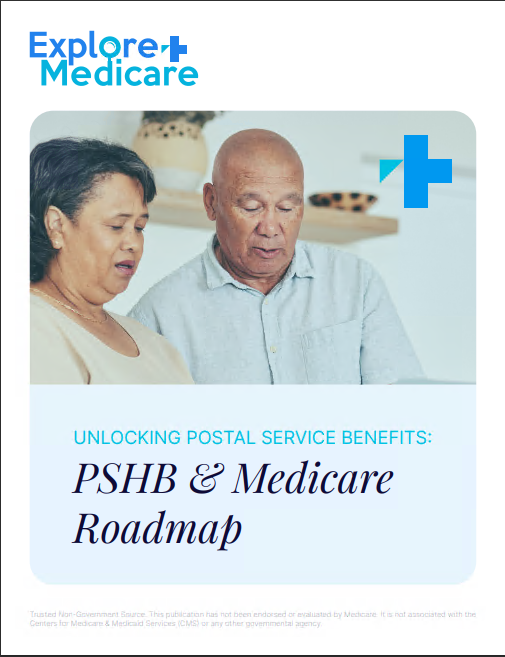Key Takeaways
-
When you visit a doctor in 2025, how your Medicare coverage works depends on which part of Medicare you use and whether your provider accepts Medicare.
-
Knowing how billing, deductibles, and copayments work with each part of Medicare can help you avoid unexpected costs and make the most of your benefits.
Understanding What Happens When You Use Medicare at the Doctor
Medicare plays a major role in how your healthcare gets paid for when you see a doctor, but it doesn’t mean everything is automatic or fully covered. Whether you’re enrolled in Original Medicare (Parts A and B) or have additional coverage like Part D or a Medicare Advantage Plan, the process of visiting the doctor follows certain steps.
Here’s what you need to know when you sit in the waiting room with your Medicare card in hand.
Step One: Confirm the Doctor Accepts Medicare
Before making an appointment, always check if the doctor:
-
Accepts Medicare assignment (which means they agree to be paid directly by Medicare and accept the Medicare-approved amount).
-
Participates in Medicare but doesn’t accept assignment (which may result in higher out-of-pocket costs).
-
Does not accept Medicare at all (you’ll likely pay the full cost yourself).
In 2025, most healthcare providers who treat older adults participate in Medicare, but you should never assume—especially with specialists.
What Happens During the Appointment
Once you’re at the doctor’s office and you’ve confirmed that the provider accepts Medicare, the visit will proceed like any other medical appointment. However, from a Medicare standpoint, here’s what’s happening behind the scenes:
-
Your Medicare card is used to identify your benefits.
-
The office bills Medicare for covered services.
-
You may need to pay a copayment or coinsurance, depending on what is done.
Original Medicare (Part B) generally covers 80% of the approved amount for outpatient services after you meet your annual deductible, which is $257 in 2025. You are responsible for the remaining 20%, unless you have supplemental coverage.
What Medicare Covers at the Doctor’s Office
Medicare doesn’t cover every service, so it’s helpful to know what’s generally included:
-
Preventive services: Screenings, annual wellness visits, and flu shots are typically covered at no cost if the provider accepts assignment.
-
Medically necessary services: Office visits, diagnostic tests, and treatments that meet Medicare’s criteria.
-
Mental health services: Therapy sessions, psychiatric evaluations, and substance use disorder treatments when deemed necessary.
Keep in mind that cosmetic procedures, most dental care, and routine vision or hearing exams are not covered.
You May Need to Sign an ABN Form
If your doctor believes a service might not be covered by Medicare, they may ask you to sign an Advance Beneficiary Notice (ABN) before the service is performed. Signing this form means you may be responsible for the full cost if Medicare denies payment.
Ask questions before signing. If you’re unsure why a service may not be covered, you have the right to decline the service or request more details.
How Part B Works During a Visit
Medicare Part B is the part of Original Medicare that covers most outpatient services, including doctor’s visits. Here’s how it typically works in 2025:
-
Annual deductible: $257.
-
Coinsurance: After meeting the deductible, you usually pay 20% of the Medicare-approved cost.
-
Provider charges: If the doctor doesn’t accept assignment, you may be billed up to 15% more than the Medicare-approved amount.
That’s why choosing a provider who accepts assignment can significantly reduce your costs.
Prescription Needs and Part D
If your doctor prescribes medication during your visit, Medicare Part D helps cover the cost of most outpatient prescription drugs. Part D is separate from Original Medicare, and each plan has its own formulary, deductible, and copay structure.
In 2025, the out-of-pocket maximum for Part D is capped at $2,000. Once you reach this amount, you won’t pay more for covered prescriptions the rest of the year.
Be sure to:
-
Ask if the drug is covered under your plan.
-
Check whether prior authorization is required.
-
Know your preferred pharmacy network for better pricing.
How Coordination Works with Other Coverage
If you have other insurance in addition to Medicare, like Medicaid or retiree benefits, coordination of benefits determines who pays first. Typically:
-
Medicare pays first if it’s your primary insurance.
-
The other plan may cover some or all of what Medicare doesn’t.
This coordination is automatic, but it’s helpful to confirm with both your doctor and your secondary insurance to avoid billing confusion.
Staying Ahead of Preventive Visits
Preventive care helps catch problems early—and Medicare covers many of these services without applying the deductible or coinsurance:
-
Annual wellness visit
-
Mammograms and other cancer screenings
-
Cardiovascular disease screenings
-
Depression screenings
-
Diabetes screenings
In 2025, these services are typically free if your provider accepts Medicare assignment. But diagnostic follow-ups based on screening results may involve standard cost-sharing.
Specialist Referrals and Follow-Up Visits
You don’t need a referral to see a specialist under Original Medicare. However, if you’re in a Medicare Advantage Plan, your plan may require one.
When you do visit a specialist:
-
Confirm they accept Medicare or your Medicare Advantage Plan.
-
Be prepared for similar cost-sharing: deductible, coinsurance, or copayments.
If your visit leads to outpatient surgery or tests, those may also fall under Part B coverage, depending on where they are done.
What Happens After Your Visit
Once your appointment is over:
-
The provider submits a claim to Medicare.
-
Medicare pays their share (usually 80%).
-
You receive a Medicare Summary Notice (MSN) if you’re on Original Medicare, or an Explanation of Benefits (EOB) if you’re in a Medicare Advantage Plan.
These notices show what was billed, what Medicare paid, and what you may owe. Always review them to make sure they match the services you received.
If something looks wrong:
-
Contact your provider for clarification.
-
You have the right to appeal decisions within 120 days.
Staying Organized with Medicare Records
Keep a file (digital or paper) with the following:
-
Copies of your MSNs or EOBs
-
A log of all doctor visits
-
Copies of bills, receipts, and payments
-
A list of your current medications and providers
This helps you track costs, resolve billing issues, and prepare for next year’s coverage review during the fall Medicare Open Enrollment Period (October 15 to December 7).
Avoiding Surprises: Ask Before You’re Billed
Always ask the office staff the following questions during check-in:
-
Does this provider accept Medicare assignment?
-
Will I need to pay anything today?
-
Is this service preventive or diagnostic?
-
Are there any additional fees for lab tests or imaging?
Understanding your financial responsibility upfront can help you avoid surprise bills later on.
When Something Isn’t Covered
There may be times when Medicare doesn’t cover a service. Common examples include:
-
Routine foot care
-
Cosmetic procedures
-
Certain alternative therapies (like acupuncture, except in limited cases)
If you still want the service, you’ll pay the full amount unless you have other coverage that helps pay.
When You’re Treated in a Hospital Outpatient Setting
If you visit a hospital-based clinic for an appointment, Medicare treats it as an outpatient hospital service. This means:
-
You may receive two separate bills: one from the doctor and one from the facility.
-
Facility fees can result in higher out-of-pocket costs than if you saw the same provider in a private office.
Ask if the doctor is hospital-based to prepare for these potential charges.
Making the Most of Your Medicare Doctor Visits
The best way to get value from your Medicare coverage is to:
-
Stay current on preventive services.
-
Keep track of your deductible status.
-
Ask questions before receiving non-emergency services.
-
Choose providers who accept assignment.
-
Understand your plan’s rules if you have Medicare Advantage or Part D.
When you’re informed, you can avoid extra costs and make the most of your coverage.
Understanding How Medicare Works at the Doctor Helps You Take Control
Medicare does a lot to support your health, but it’s important to understand how it actually functions during a doctor’s visit. From billing to coverage decisions, a little knowledge goes a long way.
Whether you’re new to Medicare or have been enrolled for years, make sure you’re asking the right questions, reviewing your notices, and staying proactive.
If you’re unsure how your current coverage works at the doctor’s office or want to explore supplemental options, speak with a licensed agent listed on this website for professional advice.









